December 20, 2022 – Volume 24, Issue 12
In This Issue
- Flanigan’s Eco-Logic: The 2022 Review
- Essay on the Days of Fusion
- BYD’s Electric Vehicles
- Autonomous Taxis
- Solar “Earth-Mount” Approach
- Electric Semis Rolling Out!
- The Power of Photosynthesis
- Flanigan’s Ego-Logic Podcast Updates
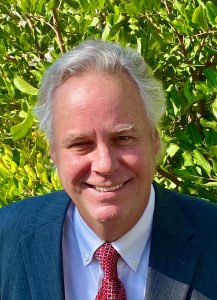
Flanigan’s Eco-Logic: The 2022 Review
Thanks. We end the year with thanks, Gratitude for another year of having a great team at EcoMotion, working on meaningful projects with good folks and solid partners. Our work continues to be diverse, impactful, interesting, and stimulating. A big shout out to those who supported EcoMotion’s consulting and media works this year: Michael, Jibade, Andrew, Alizeh, Linda, Terry, Sierra, Skye, Rhys, and Dave. In 2022, EcoMotion became certified as a Benefit Corporation. Some highlights!
The Eco-Conscience
Sustainability consulting takes many forms. This year we were asked to be the “eco-conscience” of a high-end, condominium development in Lake Tahoe called Latitude 39. That has involved advocating for highly efficient geoexchange, fighting for pool and spa efficiency, minimizing fire features and snowmelt, incorporating living walls, building resiliency into the condos with batteries, V2G parking, even circadian rhythm lighting and a meditation room on the ground level. For the same client, we’re supporting the unique expansion of a special education school in Los Angeles with solar and storage and sustainability solutions. For many of us, sustainability has moved beyond cost-effectiveness… and is a passion, a commitment to Earth and our descendants. We’re happy to support deep greening. Current works include comprehensive smart energy management for a country club.
Eco-Net News in Year 38
EcoNet News has now been published since 1984, a total of 38 years. It was originally a weekly called Issues Review and Tracking at the New York Power Authority, then “The IRT,” and later EcoNet News. Well over 500 issues have been published… all good news aimed to inspire. For many of us, EcoNet brings comfort in the highlights of constant innovation. It puts forth collective intelligence for energy and environmental solutions. We published 12 issues in 2022.
Flanigan’s Eco-Logic Podcast
What a year it was for Flanigan’s Eco-Logic Podcast. Forty-three episodes were recorded. We had amazing guests! Panama Bartholomy, Rick Heede, David Nahai, Paul Schwer, Jigar Shah, Lauren Faber O’Connor, Wally McGuire, Mona Newton, Chris Lane, Mark Jacobson, Chris Klinga, Susan Eirich, Rob Pratt, Salem Afeworki, Dave Munk, Matt Harper, Rob Watson, Laurel Rothschild, Craig Perkins, Allen Hershkowitz, Aura Vasquez, Joel Levin, Nurit Katz, Peter Rumsey, Kitty Adams, and Steve Lewis. Thanks to them all. They educated our listeners and inspire me deeply.
We produced six podcast “Crash Courses with Ted Flanigan,” hosted by Sierra Flanigan, on Electric Vehicles, Net Energy Metering, Green Hydrogen, Earth Day with Skye Flanigan, our Colorado experimental solar home, and Offshore Wind. Sierra interviews me. My job is to demystify and unpack these exciting issues. Additionally, we recorded 12 issues of EcoNet News as a podcast. A shout out to our Nova Scotia-based podcast coach, Rhys Waters, for enhancing our game!
School District Solar Services
Last year we reported on our solar works for Chula Vista Elementary School District. Well now, we’re pleased to report that the solar project is complete. All 49 campuses now have solar ports sized to offset each campus’s power usage on an annual basis. We are still working on a microgrid at the District Office there, and sorting out some Ebus charging issues. This year our team has also provided services for Poway Unified School District, Huntington Beach City School District, Orange Unified School District, Dehesa School District, Warner Unified School District, Centralia School District, and Mountain View School District. Banning Unified School District has just hired us to assess its solar production.
Microgrids for Municipal Buildings
EcoMotion’s work with energy resilience enabled by solar + storage microgrids has been inspiring, glimpses of the future. We thank all of our industry colleagues for educating us on microgrid capabilities and controls and equipment. Our team is knee-deep in determining levels of facility resilience, and thus levels of storage capacity and energy, and how to control it. We thank our project colleagues at both Clean Power Alliance and East Bay Community Energy, as well as our partners at Point Energy Innovation, for allowing us to develop exciting pilot programs with them. As a team, we are “hardening” municipal facilities for energy resilience, so important given the ravages of climate weirding.
Distributed Energy Resources Best Practices
In 2022, I stepped down as Commissioner for Glendale Water and Power for EcoMotion to take on a consulting assignment… specifically to survey the field and bring best practices in Energy Efficiency, Load Management and Distributed Energy Resources to Glendale. Our team conducted extensive research of best practices throughout California, coast-to-coast, and with international examples from South Africa, England, and Australia. It was a fascinating review of progressive utilities’ works changing their business models from commodity to service providers. Efficiency is being sold as a service, same with resilience, EV charging, and more. We leaned on colleagues at NRDC, RMI, ESource, ACEEE, Holy Cross, ConEd, Ohm, Span, Marin Clean Energy, Green Mountain Power, and others for guidance. We reviewed 68 exemplary utilities and highlighted 148 programs relevant to Glendale and our need to address peaks with markets.
Energy and Environmental Strategic Planning
In 2022, EcoMotion also began to work for the San Diego Community College District focused on its energy master planning. SDCCD has over 100,000 students on three major campuses. The first phase of work involved an electric, natural gas, solar, and fuel cell assessment of the District’s campuses and auxiliary learning and administrative facilities. Two campus’s fuel cells are providing major savings to the District, as are impressive solar systems. Now EcoMotion’s work shifts to greenhouse gas accounting and in collaboration with stakeholders, developing the District’s Energy and Environmental Strategic Plan.
Full Steam Ahead!
And now we look forward to 2023 with a full slate of exciting ongoing and new projects. We’re wrapping projects, like the massive solar + storage system at Scott Brothers Dairy.
We’re hiring, looking for enthusiastic and energetic talent to augment our team. In particular, we’re adding to our solar, storage, and microgrid capabilities. If you know of young professionals eager to delve into the distributed energy space, or professionals seeking to make a career change to support the new green economy, please do send them our way.
Quote of the Week
“This astonishing scientific advance puts on the precipice of a future no longer reliant on fossil fuels but instead powered by new clean fusion energy.”
Senator Charles Schumer, D-New York
“By the time that the fusion technology is ripe for commercial application, many countries will already have virtually removed fossil fuels from the power system. And there will be no point, 15 years after that, in replacing clean and extremely cheap renewables with clean and probably expensive fusion.”
Richard Black, Former BBC Correspondent
Essay on the Days of Fusion
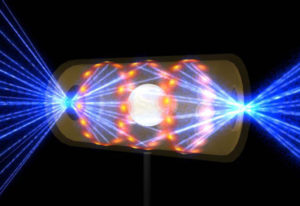
The sun is our best example of fusion. It is a nearly perfect ball of hot plasma, heated to incandescence by nuclear fusion reactions in its core. The sun radiates this energy mostly as light, ultraviolet, and infrared radiation. The sun is extremely hot. Its temperature ranges from 27 million degrees F at its core to 10,000 degrees F at its surface.
Fusion is a nuclear reaction that combines two atoms to create one or more new atoms with slightly less total mass. The difference of mass is released as energy. Fusion is a thermonuclear reaction. Our daily reminder of nuclear power is the sun, some 91.46 million miles away and strongly influencing life on Earth.
Scientists have been trying to emulate nuclear fusion for years… seeking to tap a limitless potential for electricity generation by fusing abundant hydrogen atoms. Nuclear fusion could be a plentiful source of power with no wastes or carbon emissions. Fusion does not result in long-lived radioactive wastes.
The big tease! In March of 1989 two chemists at the University of Utah made an announcement that shocked the scientific world. Martin Fleischmann and Stanley Pons claimed to have harnessed the power of nuclear fusion in a test tube at room temperature in their laboratory. This is known as “cold fusion.” They reported that their apparatus “had produced anomalous heat of a magnitude that they assured would defy explanation except in terms of nuclear processes.”
They thought that they had discovered fusion by passing a current through heavy water containing deuterium between palladian electrodes. Their test tube was producing excess heat. But the experiment was discredited and its results could not be emulated. Nuts. That excitement faded fast. “Cold fusion” has been largely put aside; the action is with “hot fusion.”
Let’s digress and discuss fission, the process of splitting molecules and releasing energy. It’s the other and highly commercialized form of nuclear power. Remember that fission was going to be too cheap to meter? Richard Milhous Nixon said so in a famous speech. He reported that mankind had mastered science, uncapping endless energy. But that never turned out to be true. Between safety concerns and costly construction time-related delays, nuclear power became America’s most expensive electricity source. Then stark reminders of its dangers at Three Mile Island, Chernobyl, and Fukushima. Amory Lovins noted that using nuclear power to generate electricity is like using a chainsaw to cut butter. He’s led the soft energy path for decades.
Despite the challenges with fission, nuclear research continues on both fission and fusion. This past week was remarkable for fusion: For a brief moment last week, within a large metal sphere at the Lawrence Livermore National Laboratory in Livermore, California, scientists recreated and controlled the power of the sun. Using the most powerful lasers on earth, for a few billionths of a second, the team of scientists at the National Ignition Facility there was able to fuse together hydrogen atoms.
What’s new is that the amount of energy released was greater than the amount of energy used by the lasers. Some analysts believe that humankind may look back on this step as they do the first flight of the Wright Brothers. Secretary of Energy Jennifer Granholm called it, “one of the most impressive scientific feats of the 21st century.”
Let’s drill into the experiment: Scientists measure and evaluate energy in and energy out, a ratio known as the “gain.” On December 5th, and at the National Ignition Facility, scientists shot 192 lasers at a 1 mm pellet of fuel – about the size of a jelly bean – with 2.05 million joules of energy for a few billionths of a second.
What happened last week is known as “ignition,” the condition in which the fusion energy generated equaled or exceeded the laser energy. The pellet was made up of deuterium and tritium surrounded in a gold canister. When the lasers hit the canister, they heated and compressed the fuel pellet to about 20 times the density of lead and to a temperature of more than 5 million degrees… about 100 times hotter than the surface of the sun. This triggered a reaction that released 3.15 million joules … a gain of 1.5, smashing the previous fusion gain record of 0.7. During ignition, a thermonuclear reaction fuses light elements like hydrogen into heavier ones like helium, thereby generating more energy than it takes to produce.
It’s both exciting and expensive research. Expenses at the National Ignition Facility are $3.5 billion so far, with tens of billions of dollars anticipated to further develop the technology for commercial applications. The breakthrough at Livermore has sparked renewed interest in fusion and will likely result in additional research dollars.
But will fusion be developed in time to make a difference? Some ponder and predict that our society will already have decarbonized by the time that fusion is developed. We will have already made the switch to cheap renewable resources. So, they say, why replace that with expensive fusion? EcoMotion is reminded of a Frank Zappa quote that, “A mind, like a parachute, only works when it is open!” We must remain open to all energy options for a healthy and sustainable future.
BYD’s Electric Vehicles
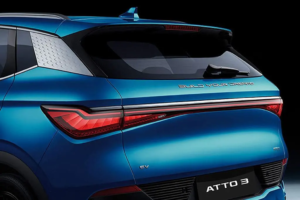
Shenzhen automaker BYD, Build Your Dreams, is making waves selling electric vehicles. Just this year, the Chinese automaker backed by Warren Buffet’s Berkshire Hathaway, overtook Tesla as the world’s largest electric vehicle producer by number of vehicles sold.
Founded in 2003, BYD manufactures automobiles, buses, electric bicycles, trucks, forklifts, solar panels, and rechargeable batteries. BYD has had a dramatic rise in sales, the overwhelming majority of which are in China. It manufactures both all-electric and plug-in hybrid electric cars (a hybrid configuration using electricity and gas), about half and half of each.
So far this year, BYD has sold over 1.62 million electric cars, more than tripling its sales volume from 2021. Inside EVs reports that BYD will likely sell more than 2 million electric vehicles in 2022. So far it has built and sold more than 3 million. Models include the Song, the Han, the Qin, Tang, Dolphin, and Seal.
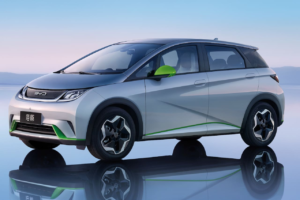
In related news, BYD plans to introduce its first sodium-ion battery electric car in 2023. It’s planned for BYD’s Seagull electric city hatch. The sodium-ion chemistry is reportedly more sustainable, cheaper to produce, and safer than conventional lithium-ion packs. As such it can substitute lithium-ion phosphate packs for lower range entry-level EVs. The batteries use less raw materials and no lithium, cobalt, copper, or graphite, making them cheaper to produce.
The cost of the Seagull with the sodium-ion batteries is anticipated to be ~60,000 Yuan or $8,400 USD. Its range is expected to be 180 miles. The same car will be offered with a lithium-ion battery pack and with a 240-mile range. The cheaper batteries may also be offered in the even-smaller BYD Dolphin.
Autonomous Taxis
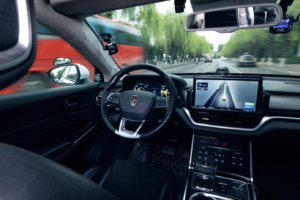
Image Courtesy of Baidu
Autonomous taxis are taxis with no drivers. Imagine sitting in the back-seat of a car with no driver, and whizzing about in traffic! Far out? No, it’s right now. There’s more than rising interest in what are also called “robotaxis.” They are gaining traction in the world’s largest EV market with a million rides fulfilled.
In China, two companies – Baidu and Pony Al – are the first to be allowed to charge passengers using their autonomous taxis. And they are doing so big time. The volume of driverless services offered by Baidu, operator of China’s biggest search engine (the Google of China), jumped 65% in the third quarter of 2022. Its Apollo Go robotaxi division completed 474,000 rides between July and September, up 65% from 287,000 rides in the second quarter.

Image Courtesy of Baidu
Baidu partnered with Chinese automaker Geely in 2021 to create “an intelligent EV company.” Named Jidu, it is a self-driving EV start-up. Its goal is to produce 800,000 self-driving EVs each year by 2028. On July 20, 2022, Baidu announced that it had provided more than one million rides. Its autonomous taxi services are available in all ten of China’s largest cities, including Beijing, Shanghai, Guangzhou, and Shenzhen.
Solar “Earth-Mount” Approach
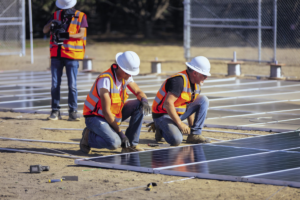
Image Courtesy of Erthos
Erthos is a Tempe, Arizona-based solar start-up with a novel idea: The company claims that it can lower the cost of utility-scale solar installations by eliminating steel racking and placing modules directly on the ground. The company is now developing a 100 MW solar project using this unusual approach. Industrial Sun is the project developer for the Texas-based project. Erthos is bringing installation costs down by eliminating racking which it reports account for $0.15/watt. That’s about 10% of the cost.
According to Erthos, its technique is, “taking a bite out of the rising costs of solar installations.” Erthos sees trackers and conventional racking as a tremendous amount of unnecessary materials, as well as risks of failure. Ethos claims that it can build a solar plant in half the time on one-third of the land area, while using 70% less cable and trenching. And yes, it claims that its system can be used in different topographies with little need to grade.
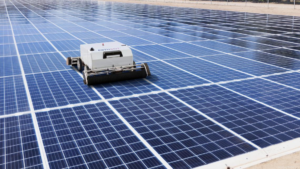
Image Courtesy of Erthos
According to the International Renewable Energy Agency, the levelized cost of utility-scale solar fell 88% from 2010 to 2021. This was the result of economies of scale, better technologies, and supply-chain coordination. In the last few years, however, there have not been cost declines. Inversely, tariffs have added costs in some cases, and commodities such as steel, aluminum, and glass have increased in price. Thus, Erthos may be a welcome form of solar system installation cost relief.
Electric Semis Rolling Out!

Tesla’s “long-hauler” Semi was first announced in 2017 and has been delayed due to Covid and parts shortages. Long after its “reveal” five years ago, just this past week, the first Semis (tractor-trailer trucks) were delivered to customers at Tesla’s factory in Sparks, Nevada. Representatives from Pepsi, which had ordered 100 of the Semis at the time of their reveal, were on hand to receive their first batch of trucks.
These are Class 8 trucks, those with a gross vehicle weight over 33,000 pounds… the big Semis that we used to call “18-wheelers.” Powered by four independent motors on the rear axles, the Tesla Semis can accelerate from 0 – 60 miles per hour in 20 seconds. They have battery options that provide ranges of 300 and 500 miles. The Semi has traction control to prevent jackknifing, regenerative braking, and an automatic clutch. The Tesla Semi has been tested fully loaded with 81,000 pounds of cargo, and achieved a 500 mile range. Tesla reports several more orders with Walmart and FedEx.
While Tesla certainly steals the limelight, other big truck makers including Daimler, Volvo, Peterbilt, and BYD have also been building EV trucks. Even Nikkola Motors, plagued by allegations of fraud and then executive turnover, delivered a hydrogen truck. Volvo’s Renault trucks seem to be leading the pack. Just a week before Tesla’s ceremony, Daimler Truck North America unveiled its new fleet of all electric Semi trucks in Detroit. On hand was Michigan Governor Gretchen Whitmer. The truck’s inaugural route was a donation of 44,000 pounds of food for the Gleaners Community Food Bank.
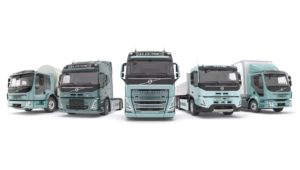
Image Courtesy of Volvo
There seems to be healthy competition among the EV truck makers, and their buyers. The race is on to sustainable delivery fleets! Just as Pepsi is at the front of the Tesla truck line, Coca-Cola is at the front of the line buying EV trucks from Renault. Both Pepsi and Coca-Cola received their first EV trucks in early December of this year. Coke will be using 30 electric trucks for last-mile deliveries in Belgium. Coke projects that it will slash its CO2 emissions from deliveries by 75% as its trucks will charge overnight with 100% renewable power. Coke’s trucks are not Semis, they are smaller Renault E-Tech D and D Wide that use single motors and have ranges of up to 347 and 195 miles respectively.
From Australia comes a story about a company named Janus Energy that is converting large trucks – including Semis – from diesel to electric. Apparently its order book keeps on growing with Macks, Volvos, Kenworths, and Freightliners queuing up for conversion. The trucks have a similar chassis width which standardizes the conversion processes. Janus reports that a Tesla Semi will likely retail in Australia for ~$537,000, Janus can convert an existing diesel Semi for ~$117,000.
Other EV news / California Q3 Update: California Energy Commission data shows that 18% of all new cars sold in California in Q3 2022 were zero emissions vehicles. That’s up 126.9% from a year ago and a powerful step in California’s quest for 100% of car sales to be zero emission by 2035.
The Power of Photosynthesis

This past week’s fusion breakthrough made the national evening news. This story on the power of photosynthesis may be the polar opposite. While both are about generating power, this one is powerful in its subtlety. This one’s about plants giving off electric currents, literally “power plants.”
According to Euronews, natural biochemical processes shuttle electrons in all living cells. There are electrically charged particles found in all atoms, in humans, bacteria, plants, and fungi alike. What’s fascinating is the notion of “catching the current” and tapping the electric power of photosynthesis. Scientists have successfully used a succulent plant to create a living bio-solar cell that runs on photosynthesis.
During photosynthesis, light drives a flow of electrons from water that ultimately results in the generation of oxygen and sugar. It is this flow of electrons that researchers have been working to “pull away.” To do so, researchers inserted electricity conductors into the leaves of the succulent Carpuscularia Lehmannii, “the ice plant.” They found that the voltage of a single leaf was 0.28 volts. A similar French experiment with a biofuel cell – at the Centre de Recherche Paul Pascal – made of a cactus, what they call “photosynthesis in vivo.”
Plants are quietly and without fanfare providing an essential service on Earth. Through photosynthesis they are pulling CO2 out of the atmosphere and replacing it with oxygen. Now might photosynthesis also be used for power generation? That’s as far out… as fusion?
Flanigan’s Ego-Logic Podcast Updates
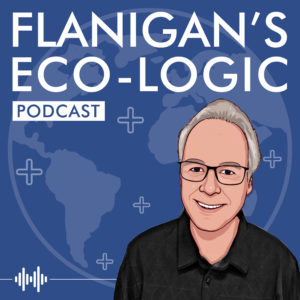
Use the links below to check out our recent podcasts. And you can always simply go to Spotify and type in Ted Flanigan to find our library of 89 podcasts, 43 of which were recorded in 2022.
Recently Released:

This issue of EcoNet News, Volume 24, Issue #12 is also available in podcast format. It includes EcoMotion’s 2022 review, highlighting our works as the “eco-conscience” of a high-end development in Lake Tahoe, publishing the EcoNet News for 38 years, the Eco-Logic Podcast hosting inspiring guests, as well as our solar consulting services for school districts, microgrids for municipal buildings, distributed energy resources best practices, and energy and carbon master planning. This EcoNet also digs into nuclear fusion, BYD’s electric vehicles, autonomous taxis, the solar “earth-mount” approach, the roll out of electric semi trucks, and the power of photosynthesis!

Panama Bartholomy is the founder of the Building Decarbonization Coalition, now in its fourth year with a prestigious list of sponsors. The Coalition he leads is a force, now marshaled to enact policies and to foster collaboration between manufacturers, designers, and installers. So far, nearly 100 cities have passed ordinances that ban natural gas use in new construction. Panama talks about “Zonal Decarbonization,” taking neighborhoods and sequentially removing the gas. He sees the 2020s as preparation…. and 2030s as the decade of scale.
